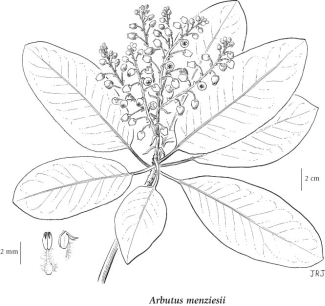| A shade-intolerant, submontane to montane, Western North American evergreen broadleaved tree distributed more in the Pacific than the Cordilleran region. Occurs in maritime summer-dry cool mesothermal climates on very dry to moderately dry soils. Restricted to water-shedding sites on southeastern Vancouver Island, Gulf Islands, and adjacent coastal mainland; its occurrence decreases with increasing latitude, elevation and continentality. Occasional in pure or mixed-species young-seral stands (usually with Garry oak or Douglas-fir) on strongly drained sites. Commonly associated with Gaultheria shallon. Characteristic of moisture-deficient sites. Source: Indicator Plants of Coastal British Columbia (Information applies to coastal locations only)
|
